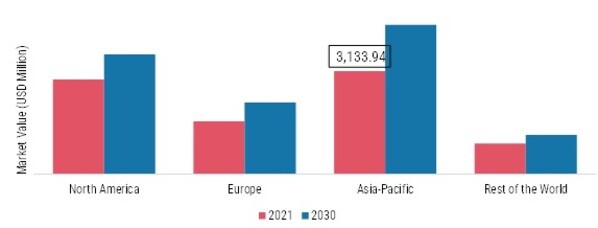Fructose Market Summary
As per Market Research Future Analysis, the Global Fructose Market was valued at USD 8.54 billion in 2021 and is projected to reach USD 11.54 billion by 2030, growing at a CAGR of 3.46% from 2022 to 2030. The increasing awareness of sugar substitutes among consumers and the diverse application areas of fructose are key drivers of market growth. The Corn segment dominated the market in 2021, while the Food & Beverages sector accounted for the largest application share. The Asia-Pacific region held the largest market share at 36.66% in 2021 and is expected to grow at the fastest CAGR of 4.26%.
Key Market Trends & Highlights
The fructose market is witnessing significant trends driven by health consciousness and diverse applications.
- Fructose market size in 2021: USD 8.54 billion; projected to reach USD 11.54 billion by 2030.
- Asia-Pacific accounted for 36.66% of the market share in 2021; expected to grow at a CAGR of 4.26%.
- High Fructose Corn Syrup held the majority share in the product segment in 2021.
- Offline distribution channel dominated in 2021; online expected to grow at the fastest CAGR.
Market Size & Forecast
| 2021 Market Size | USD 8.54 Billion |
| 2030 Market Size | USD 11.54 Billion |
| CAGR from 2022 to 2030 | 3.46% |
Major Players
Cargill, Incorporated (US), Ingredion Inc. (US), Tate and Lyle (UK), Archer Daniels Midland Company (ADM) (US), Südzucker AG (Germany), Global Sweeteners Holdings Limited (Hong Kong), Roquette Freres (France), Galam Ltd (Israel), Shijiazhuang Huaxu Pharmaceutical Co., Ltd (China), NOW Foods (US)


 Source: Secondary Research, Primary Research, Market Research Future Database and Analyst Review
Source: Secondary Research, Primary Research, Market Research Future Database and Analyst Review

